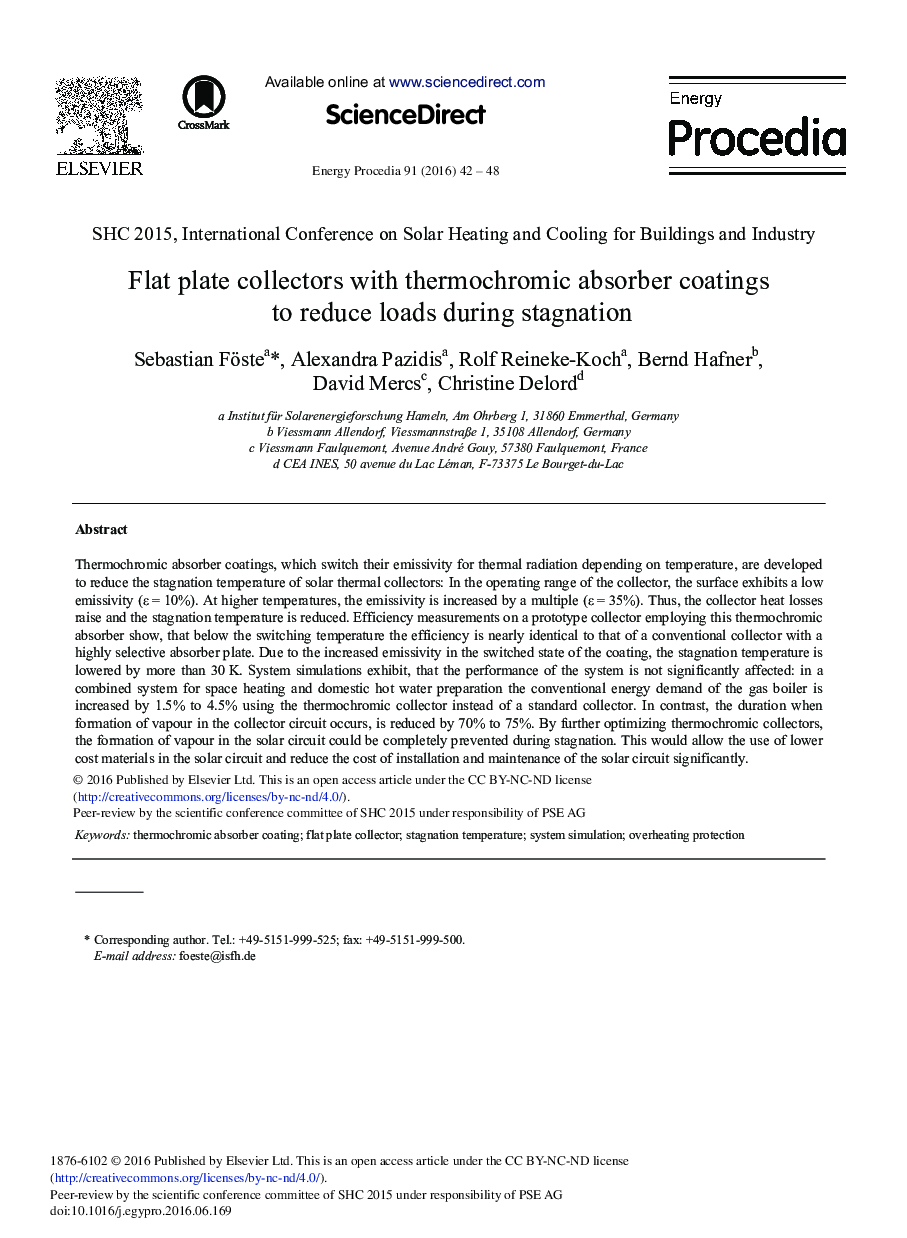| Article ID | Journal | Published Year | Pages | File Type |
|---|---|---|---|---|
| 1508625 | Energy Procedia | 2016 | 7 Pages |
Thermochromic absorber coatings, which switch their emissivity for thermal radiation depending on temperature, are developed to reduce the stagnation temperature of solar thermal collectors: In the operating range of the collector, the surface exhibits a low emissivity (ɛ = 10%). At higher temperatures, the emissivity is increased by a multiple (ɛ = 35%). Thus, the collector heat losses raise and the stagnation temperature is reduced. Efficiency measurements on a prototype collector employing this thermochromic absorber show, that below the switching temperature the efficiency is nearly identical to that of a conventional collector with a highly selective absorber plate. Due to the increased emissivity in the switched state of the coating, the stagnation temperature is lowered by more than 30 K. System simulations exhibit, that the performance of the system is not significantly affected: in a combined system for space heating and domestic hot water preparation the conventional energy demand of the gas boiler is increased by 1.5% to 4.5% using the thermochromic collector instead of a standard collector. In contrast, the duration when formation of vapour in the collector circuit occurs, is reduced by 70% to 75%. By further optimizing thermochromic collectors, the formation of vapour in the solar circuit could be completely prevented during stagnation. This would allow the use of lower cost materials in the solar circuit and reduce the cost of installation and maintenance of the solar circuit significantly.
